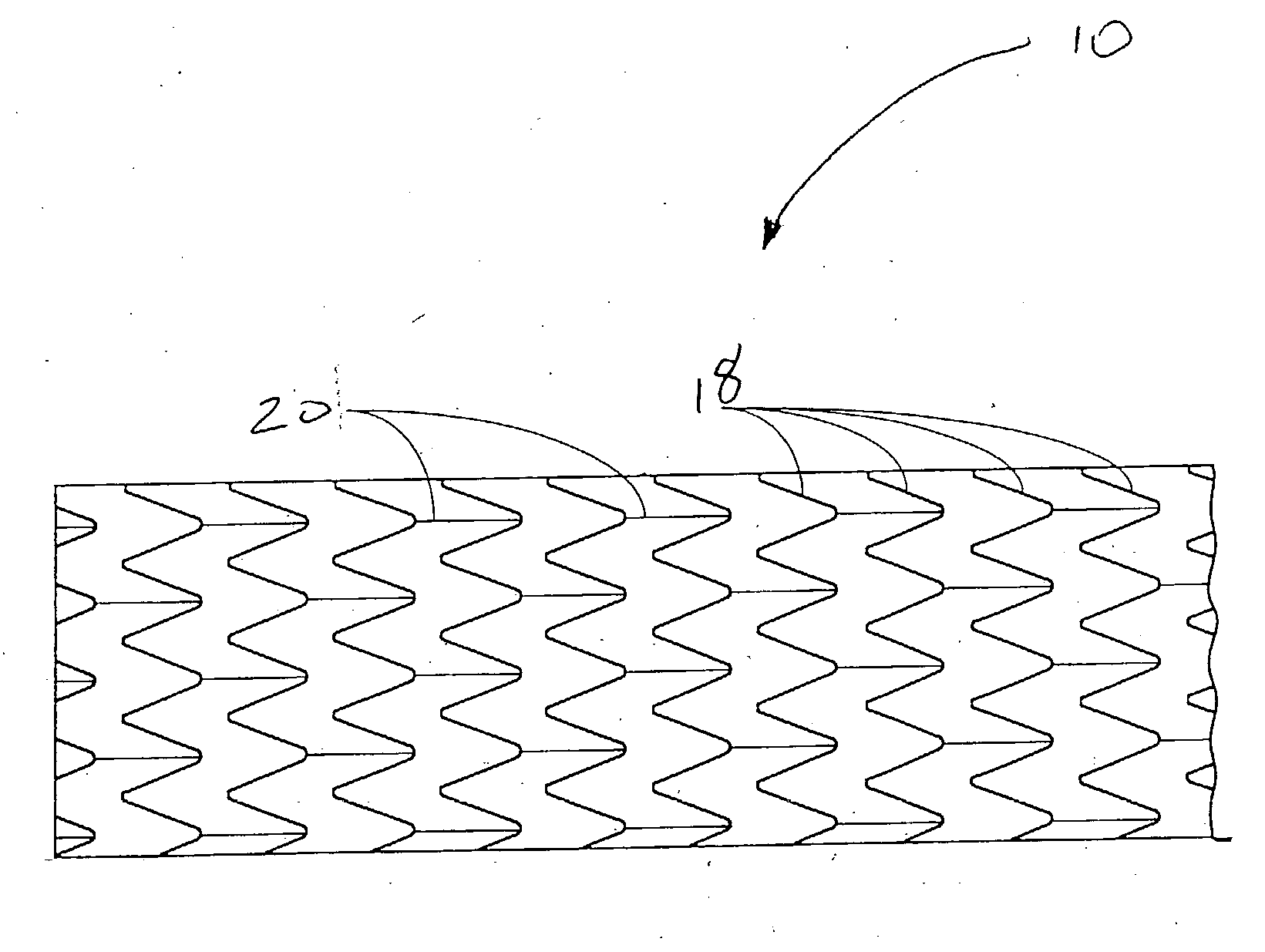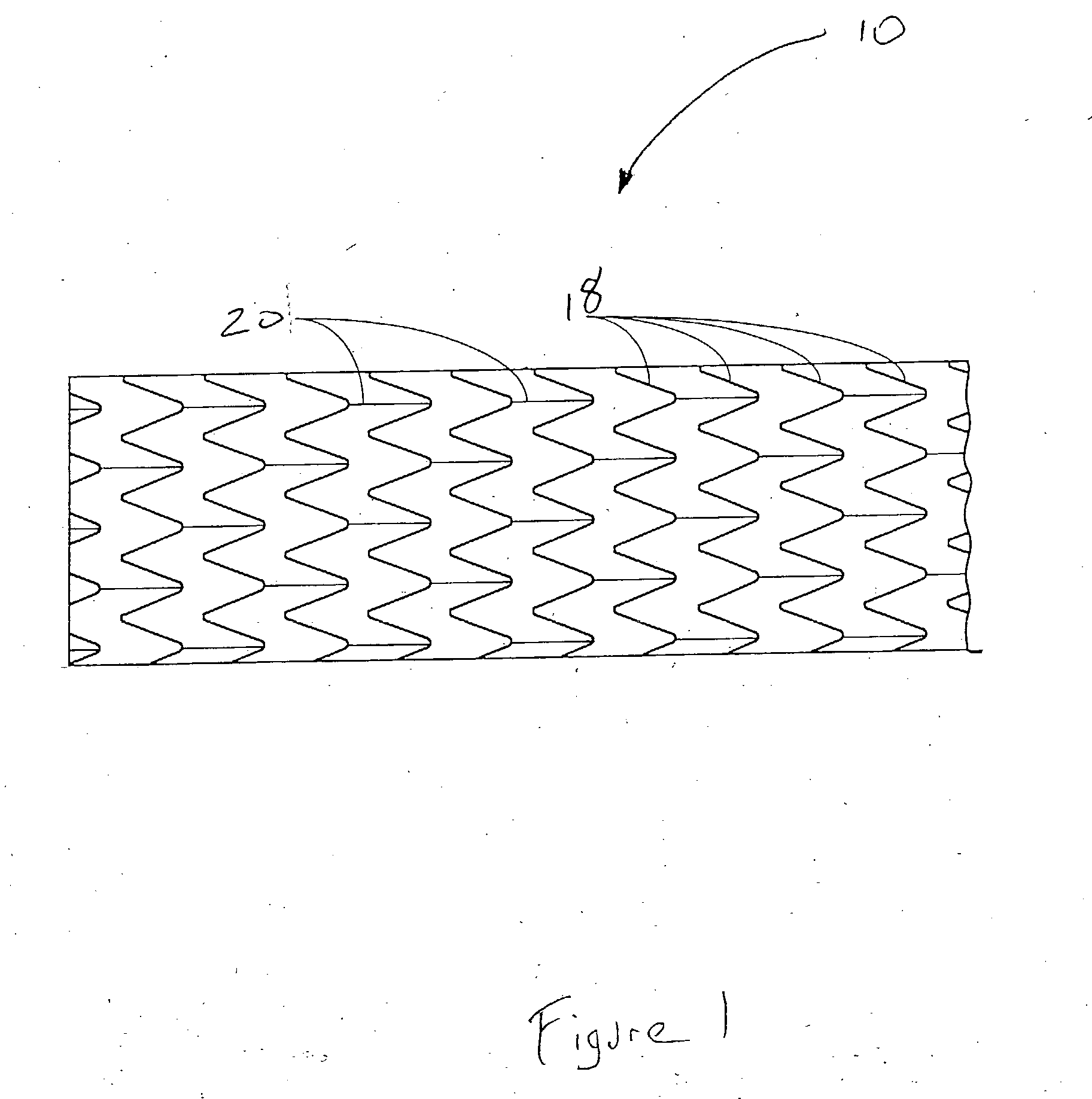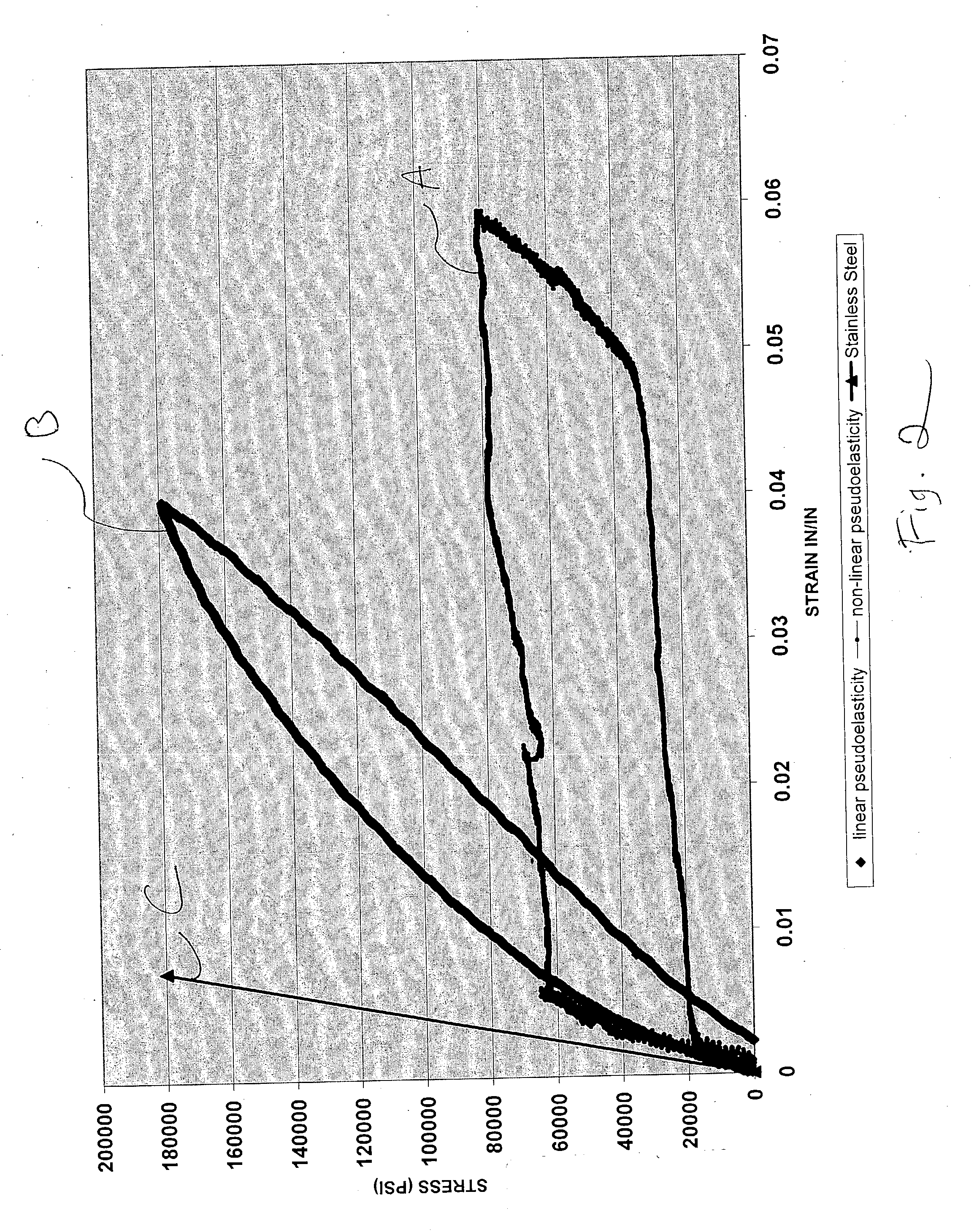Pseudoelastic stents having a drug coating and a method of producing the same
a technology of stents and coatings, applied in the field of implantable medical devices, can solve the problems of occlusion of conduits, threatening vessel closure, and intimal flaps or torn arterial linings
- Summary
- Abstract
- Description
- Claims
- Application Information
AI Technical Summary
Benefits of technology
Problems solved by technology
Method used
Image
Examples
example 1
[0053]The following study was performed to determine the effect of heat exposure on a cold-worked nickel-titanium alloy. Cold-worked nitinol wires were provided by Fort Wayne Metals. Two sets of the wires had been cold worked to provide cold work percentages of 35.6% and 49.7%. The following equipment was used for the study: (1) Instron® Model 5565 (available from Instron Corporation, Canton, Mass.); (2) a Load Cell (1000 lbs); (3) Wedge Action Grips (30 kN); (4) Video Extensometer with 100 mm FOV lens; and (5) Thermolyne® 2110 tube furnace. The control group was not exposed to heat treatment, and another test group was exposed to 400° C. for 2 minutes. The test groups were then subjected to a tensile test using the Instron® machine.
[0054]The results of the test showed that the wires that were exposed to heat treatment exceeding particular temperatures no longer exhibited linear pseudoelastic behavior. For instance, for the wires having a cold worked percentage of 35.6%, a compariso...
PUM
| Property | Measurement | Unit |
|---|---|---|
| temperatures | aaaaa | aaaaa |
| finish temperature | aaaaa | aaaaa |
| body temperature | aaaaa | aaaaa |
Abstract
Description
Claims
Application Information
 Login to View More
Login to View More - R&D
- Intellectual Property
- Life Sciences
- Materials
- Tech Scout
- Unparalleled Data Quality
- Higher Quality Content
- 60% Fewer Hallucinations
Browse by: Latest US Patents, China's latest patents, Technical Efficacy Thesaurus, Application Domain, Technology Topic, Popular Technical Reports.
© 2025 PatSnap. All rights reserved.Legal|Privacy policy|Modern Slavery Act Transparency Statement|Sitemap|About US| Contact US: help@patsnap.com



